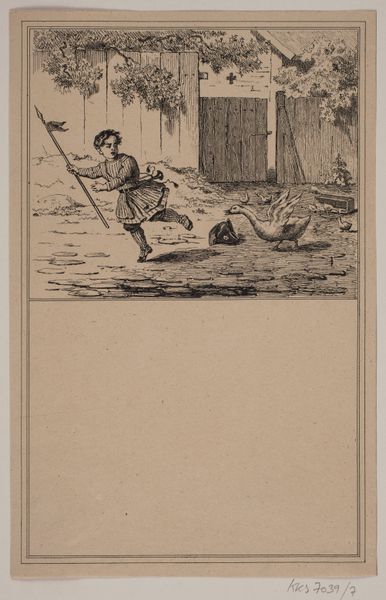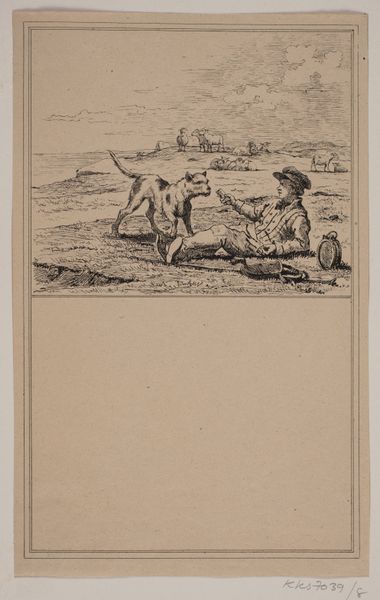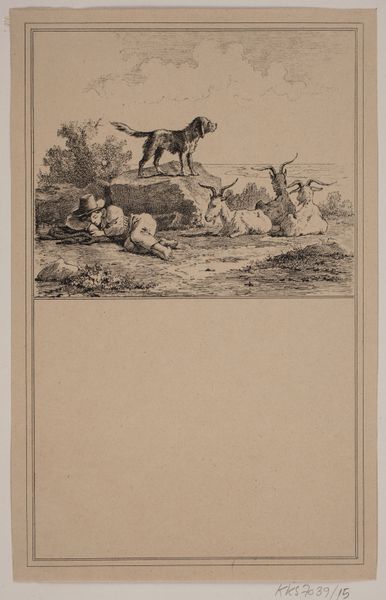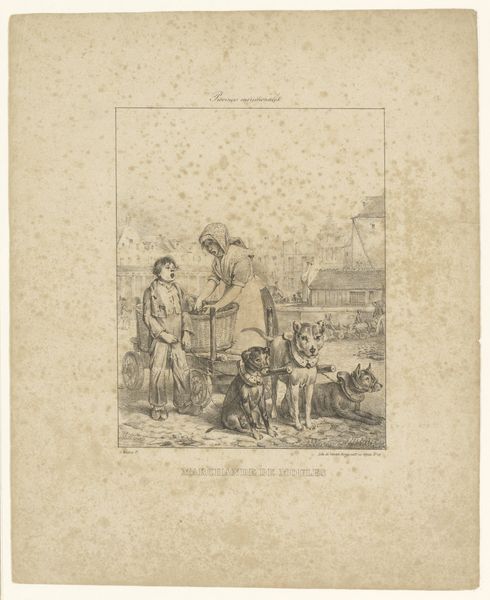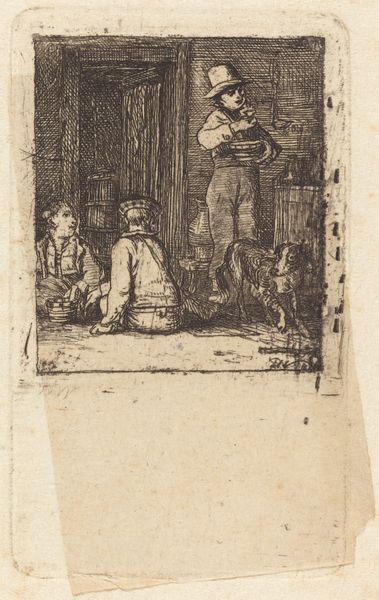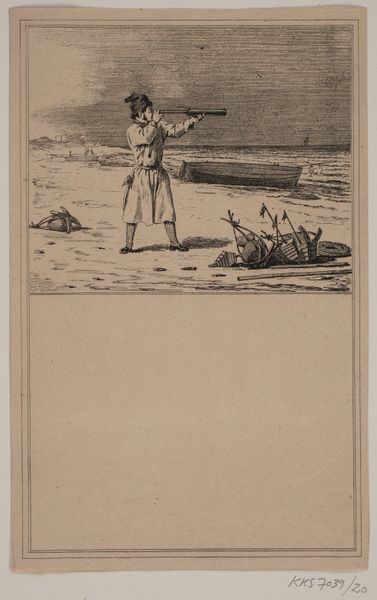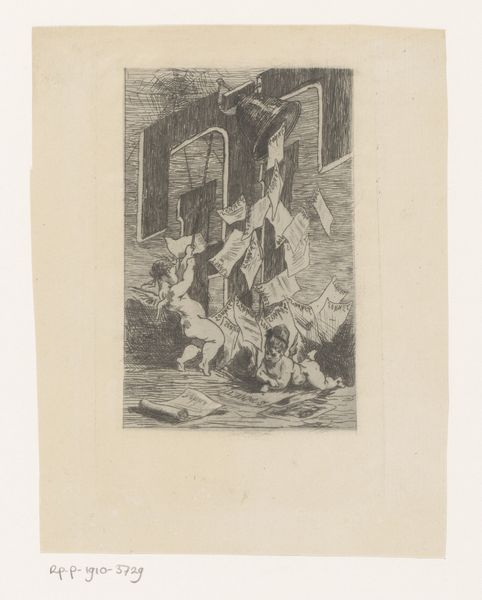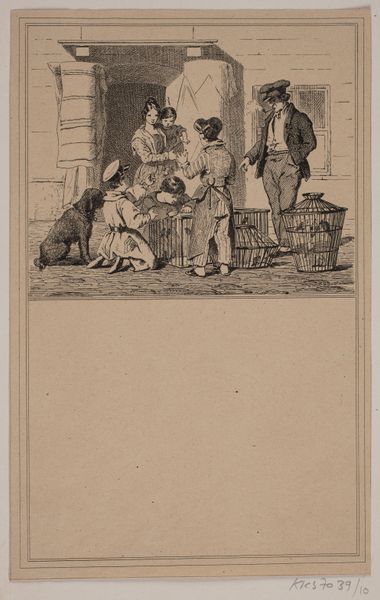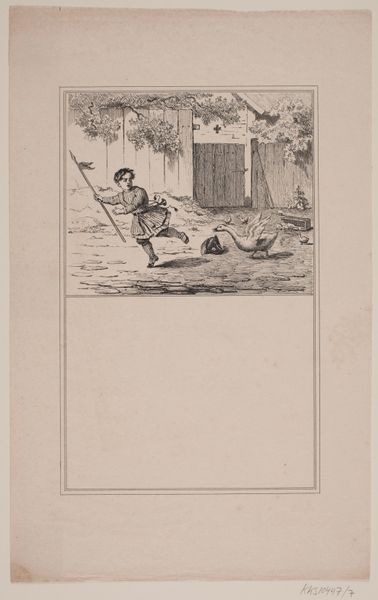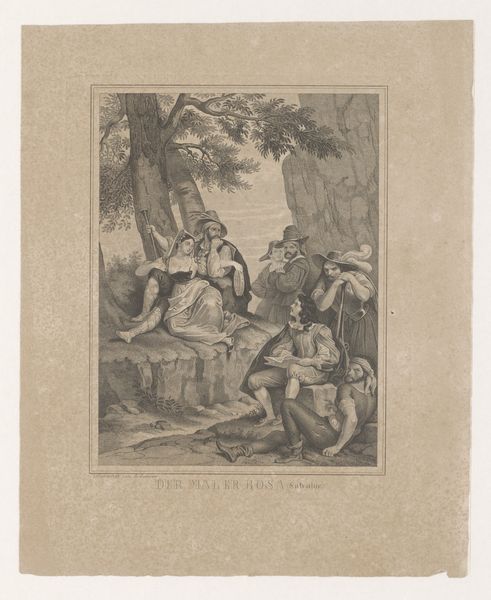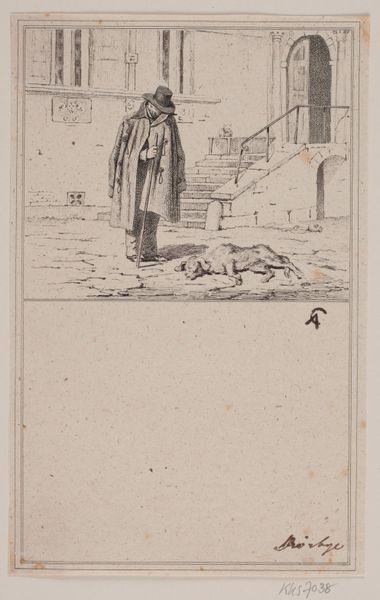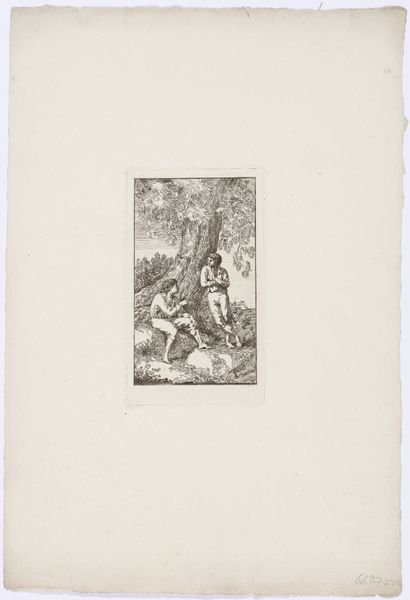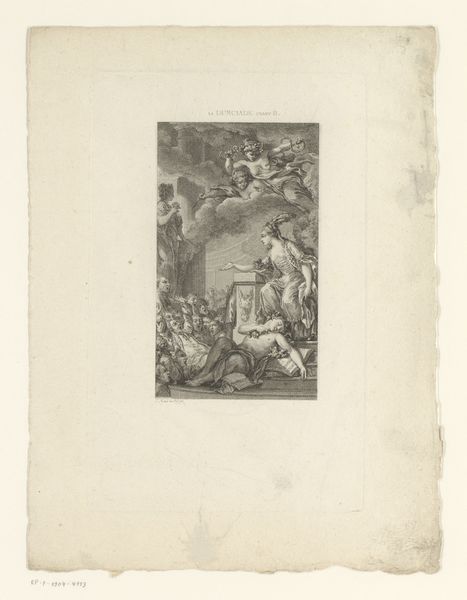
I hønsegården. Nr. 11 i Chr. Winther og M. Rørbye, "25 Billeder for små børn" 1846
0:00
0:00
lithograph, print
#
lithograph
# print
#
landscape
#
genre-painting
Dimensions: 205 mm (height) x 130 mm (width) (brutto)
Editor: So this is a lithograph print from 1846 titled *I h\u00f8nseg\u00e5rden*, which translates to “In the Henhouse.” It’s by Adolph Kittendorff, and it shows a woman feeding chickens in a farmyard. What really strikes me is how ordered and hierarchical the farm seems; everyone knows their place. How do you read that social dynamic in the artwork? Curator: That's an astute observation. Genre scenes like this, while seemingly quaint depictions of everyday life, are deeply embedded within power structures. Consider the woman's role. Is she merely a caregiver, or does her proximity to the means of sustenance—feeding the chickens—suggest a quiet form of agency within a patriarchal system? Also, who owns this henhouse, and who profits from its yield? Editor: I didn't think about it that way. The image presents a seemingly peaceful scene, but you're right, there's so much hidden beneath the surface regarding the woman's agency and the economic relations at play. Is the romanticized portrayal of rural life perhaps obscuring the harsh realities of agricultural labor at the time? Curator: Exactly! And think about the viewers for whom this print was made – presumably, middle-class urban dwellers who had the privilege to consume this idealised version of the countryside, while remaining disconnected from its complexities and labour inequities. Do you see elements of nostalgia or sentimentalism at work here? Editor: Absolutely. The artist has clearly framed a world that is quaint, productive, and far from urban centers. Understanding the intersection between gender, class, and access certainly provides a critical lens for reevaluating a seemingly simple picture. Curator: It's by questioning those idyllic representations that we start to see the artwork as a product of its time, perpetuating certain social narratives while obscuring others. Editor: I will never look at chickens the same way again! This print speaks volumes about the construction of rural identities and socioeconomic inequalities in 19th-century Denmark.
Comments
No comments
Be the first to comment and join the conversation on the ultimate creative platform.
